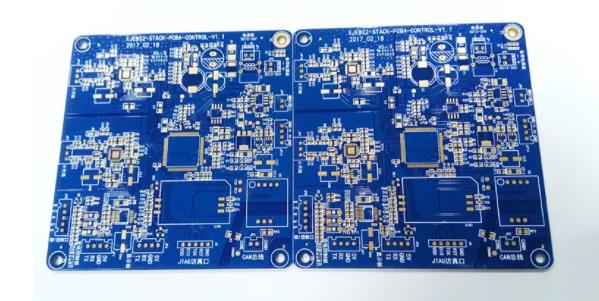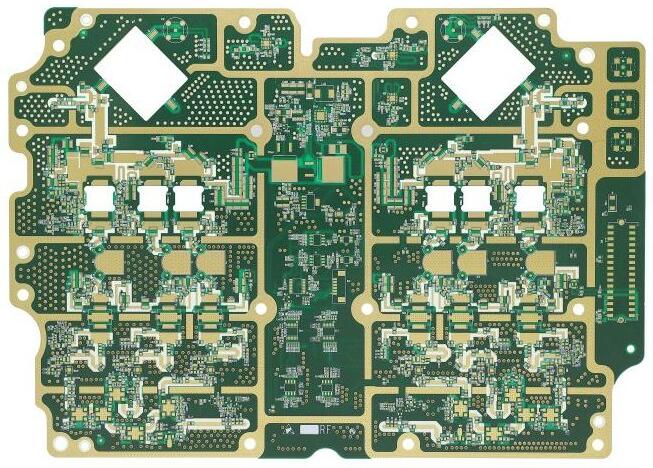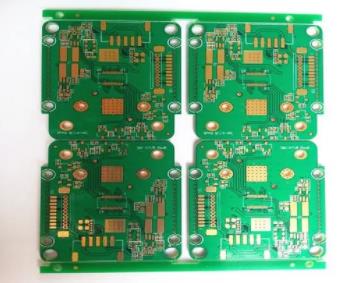
Some Questions and Answers of PCB High Frequency Board Circuit Design
PCB manufacturers, PCB designers and PCBA manufacturers explain some questions and answers about PCB high-frequency board circuit design
1. How to select high frequency PCB board?
The selection of PCB board must achieve a balance between meeting the design requirements and mass production and cost. The design requirements include electrical and mechanical parts. This material problem is usually important when designing very high-speed PCB boards (frequencies greater than GHz).
For example, the current commonly used FR-4 material, the dielectric loss at several GHz frequencies, will have a great impact on signal attenuation, and may not be suitable. As far as electricity is concerned, pay attention to whether the dielectric constant and the dielectric loss are applicable at the designed frequency.
2. How to avoid high-frequency interference?
The basic idea to avoid high-frequency interference is to minimize the interference of high-frequency signal electromagnetic field, which is called Crosstalk. You can increase the distance between high-speed signal and analog signal, or add ground guard/hunt traces beside analog signal. Attention should also be paid to the noise interference of digital ground to analog ground.
3. How to solve the problem of signal integrity in high-speed design?
Signal integrity is basically a problem of impedance matching. The factors that affect impedance matching include the structure of the signal source and output impedance, the characteristic impedance of the routing, the characteristics of the load side, and the topology architecture of the routing. The solution is to terminate and adjust the topology of routing.
4. How is the difference distribution line realized?
Two points should be noted in the wiring of differential pairs. One is that the length of the two lines should be the same as far as possible, and the other is that the distance between the two lines (which is determined by the differential impedance) should always remain unchanged, that is, they should remain parallel. There are two parallel ways. One is that two lines walk on the same side by side, and the other is that two lines walk on the upper and lower adjacent layers. Generally, the former has many side by side implementations.
5. For the clock signal line with only one output terminal, how to realize the difference distribution line?
It is meaningful to use differential distribution lines only if both the signal source and the receiver are differential signals. Therefore, the difference distribution line cannot be used for the clock signal with only one output terminal.
6. Can a matching resistance be added between differential line pairs at the receiving end?
The matching resistance between differential line pairs at the receiving end is usually added, and its value should be equal to the value of differential impedance. This will improve the signal quality.
7. Why should the wiring of differential pairs be close and parallel?
The wiring of differential pairs should be properly close and parallel. The so-called appropriate approach is because this distance will affect the value of differential impedance, which is an important parameter for designing differential pairs. The need for parallelism is also due to the need to maintain the consistency of differential impedance. If the two lines are either far or near, the differential impedance will be inconsistent, which will affect signal integrity and timing delay.
8. How to deal with some theoretical conflicts in actual wiring
Basically, it is right to divide and isolate analog/digital signals. It should be noted that the signal wiring should not cross the moit, and the return current path of the power supply and signal should not become too large.

The crystal oscillator is an analog positive feedback oscillation circuit. In order to have a stable oscillation signal, the specifications of loop gain and phase must be met. The oscillation specifications of this analog signal are very easy to be interfered. Even if ground guard traces are added, the interference may not be completely isolated. Moreover, if it is too far away, the noise on the ground plane will also affect the positive feedback oscillation circuit. Therefore, the distance between the crystal oscillator and the chip must be as close as possible.
Indeed, there are many conflicts between high-speed cabling and EMI requirements. However, the basic principle is that some electrical characteristics of the signal cannot meet the specifications due to the resistance capacitance or ferrite beam added by EMI. Therefore, it is better to solve or reduce the EMI problem by using the techniques of routing and PCB stacking, such as high-speed signal routing to the inner layer. Finally, use resistance capacitor or ferrite beam to reduce the damage to the signal.
9. How to solve the contradiction between manual wiring and automatic wiring of high-speed signals?
Most automatic routing devices with strong routing software now have set constraints to control the winding mode and the number of vias. The setting items of winding engine capacity and constraints of various EDA companies are sometimes far from each other. For example, whether there are enough constraints to control the way of serpentine winding, and whether the distance between differential pairs can be controlled.
This will affect whether the routing method of automatic routing can conform to the designer's idea. In addition, the difficulty of manually adjusting the wiring is also absolutely related to the ability of the winding engine. For example, the pushing ability of routing, the pushing ability of vias, and even the pushing ability of routing to copper coating, etc. Therefore, the solution is to choose a router with strong winding engine.
10. About test coupling.
The test coupler is used to measure whether the characteristic impedance of the PCB produced meets the design requirements with TDR (Time Domain Reflectometer). Generally, the impedance to be controlled includes single wire and differential pair. Therefore, the routing line width and line spacing (when there is differential alignment) on the test coupler should be the same as the lines to be controlled.
The most important is the position of the grounding point during the measurement. In order to reduce the inductance of the ground lead, the place where the TDR probe is grounded is usually very close to the place where the signal is measured. Therefore, the distance and method between the measuring signal point on the test coupler and the grounding point should conform to the probe used.
11. In the design of high-speed PCB, the blank area of the signal layer can be coated with copper, and how should the copper coating of multiple signal layers be distributed on the grounding and power supply?
Generally, the copper coating in the blank area is mostly grounded. It is only necessary to pay attention to the distance between the copper coating and the signal line when copper is applied beside the high-speed signal line, because the copper coating will reduce the characteristic impedance of the line. Also pay attention not to affect the characteristic impedance of other layers, such as in the structure of dual strip line.
12. Is it possible to use the microstrip line model to calculate the characteristic impedance of the signal line above the power plane? Can the signal between the power supply and the ground plane be calculated using the stripline model?
Yes, both the power plane and the ground plane must be considered as reference planes when calculating the characteristic impedance. For example, the four layer board: top layer - power layer - stratum - bottom layer. At this time, the model of the characteristic impedance of the top layer wiring is the microstrip line model with the power plane as the reference plane.
13. Can test points automatically generated by software on high-density printed boards meet the test requirements of mass production in general?
In general, whether the software automatically generates test points to meet the test requirements must depend on whether the specification of additional test points meets the requirements of the test equipment. In addition, if the routing is too dense and the specification for adding test points is strict, it may not be possible to automatically add test points to each segment of the line. Of course, you need to manually complete the place to be tested.
14. Will adding test points affect the quality of high-speed signals?
Whether it will affect the signal quality depends on the way of adding test points and how fast the signal is. Basically, the additional test points (not the online existing via or DIP pin as the test point) may be added to the online or pulled out from the online for a short length of line. The former is equivalent to adding a small capacitor on line, while the latter has an extra branch.
Both of these two conditions will affect the high-speed signal more or less. The degree of influence is related to the frequency speed of the signal and the edge rate of the signal. The magnitude of the impact can be known through simulation. In principle, the smaller the test point, the better (and of course, meet the requirements of the test machine). The shorter the branch, the better.
15. Several PCBs constitute the system. How should the ground wires between the boards be connected?
When the signal or power supply between the interconnects of PCB boards acts, for example, if board A has power or the signal is sent to board B, there must be an equal amount of current flowing back from the stratum to board A (this is Kirchoff current law). The current in this stratum will flow back to the place with the lowest impedance.
Therefore, the number of pins allocated to the formation at each interface, whether the power supply or signal is connected, cannot be too small to reduce impedance, which can reduce the noise on the formation. In addition, it is also possible to analyze the entire current loop, especially the part with large current, and adjust the grounding method of the stratum or ground wire to control the current path (for example, make a low impedance at a certain place to let most of the current flow from this place), so as to reduce the impact on other sensitive signals. PCB manufacturers, PCB designers and PCBA manufacturers will explain some questions and answers about PCB high-frequency board circuit design.







